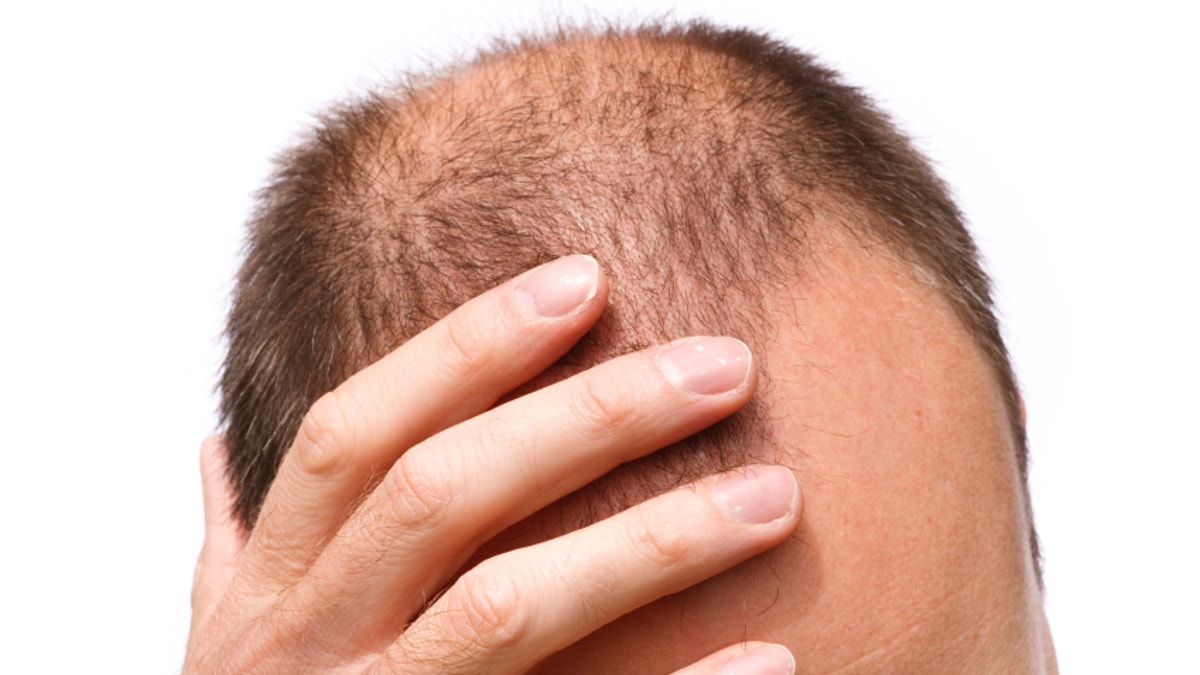
Man expressing stress, worry or depression; isolated against a white background (Paul Maguire)
Researchers have identified the protein responsible for male pattern baldness, raising expectations that an effective treatment for the most common cause of hair loss in men is on the horizon.
Male pattern baldness affects 8 out of 10 men and causes the hair follicles to shrink and produce microscopic hairs, which grow for a shorter duration of time than normal hairs.
“We looked at bald scalps last year and saw the hair follicles were still present,” senior author Dr. George Cotsarelis, chair and professor of Dermatology at the Perelman School of Medicine at the University of Pennsylvania, told FoxNews.com. “So we inferred there was either a lack of an activator [to spur hair growth] or the presence of an inhibitor.”
Using microrays, Cotsarelis and his colleagues took tissue samples from the scalps of men who suffered from androgenetic alopecia and measured levels of different genes. The samples were taken from both bald spots on the scalps and spots with hair.
Age is a state of mind! Share photos and videos of your 'young at heart' loved ones with uReport!
The researchers found the bald spots had abnormally high levels of a protein called Prostaglandin D2 (PGD2)—nearly three times the amount present in the scalp areas with hair.
Once the researchers identified the protein, they did further functional tests to study what effect PGD2 had on hair in mice and hair follicles grown in a lab.
“It really decreased the growth,” Cotsarelis said, adding that the findings are “completely new.”
“Nobody had any idea that PGD2 had anything to do with hair growth,” he said. “We knew there were other prostaglandins that could encourage hair growth. Take Latisse, which uses a prostaglandin (F2alpha) to lengthen eyelashes. That was found entirely by accident. Patients with glaucoma were using eye-drops that contained the prostaglandin and noticed their eyelashes growing.”
PGD2, on the other hand, is an analog of F2alpha, meaning it works in the opposite way and causes hair to grow shorter.
However, for the protein to inhibit hair growth, it has to first bind to a receptor (GPR44). This receptor, according to Cotsarelis, is the target for future treatments to combat baldness.
“We had genetically modified mice that lacked the GPR44 receptors for the PGD2 protein,” explained Cotsarelis. “In normal mice, PGD2 inhibited hair growth, but in mice with non-functional receptors, the hair grew fine.”
“The inhibitory effects of PGD2 act through the receptor, so what we want to do is block the receptor,” he said.
Some compounds targeting the GPR44 receptor are already underway in other labs to treat other health issues such as asthma. In addition to regulating hair growth, prostaglandins also control cell growth and constricting and dilating smooth muscle tissue.
Cotsarelis believes this latest finding means a topical treatment for male pattern baldness may also be on the way soon.
“Absolutely,” he said. “Our research was so targeted toward figuring what was wrong—studying people who have baldness disorder—that by discovering this receptor I think there’s a really good chance of developing a treatment not too far down the road.”
The study was published in Science Translational Medicine.
